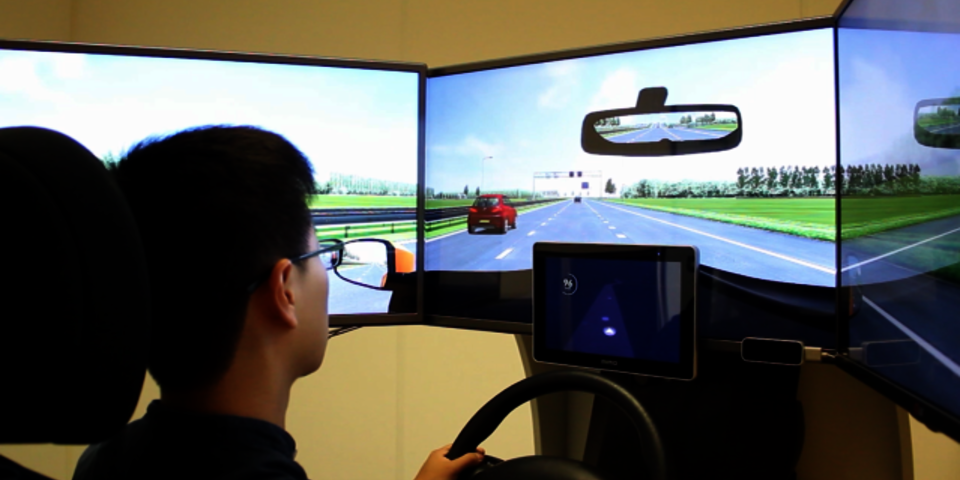Apps to combat driver aggression
If we had more options to communicate with other drivers than simply indicators, the horn and the middle finger, it could reduce the level of aggression on our roads. This is the thinking behind the doctoral project Social Car by the Chinese TU/e PhD candidate Chao Wang. He has been developing apps, among them one that drivers can use to signal that they are heading to the hospital in all haste. The hope is that this will increase the level of understanding among fellow road-users.
Aggression in traffic, believes the researcher at the TU/e's Department of Industrial Design, is due in part to the limited opportunities drivers have to communicate with each other as they sit behind the wheel. If you know why someone is in such a hurry – for example, they are on their way to hospital – it is much easier to react in a relaxed way, or even with compassion. This prompted Wang to make an app, CarNote, that enables users to indicate that they are in a hurry, and why. To prevent misuse, the app's use is limited to two hours a month. Among test subjects in a driving simulator, CarNote did indeed reduce feelings of aggression.
CarNote is just one part of Wang's doctoral project Social Car, for which the PhD candidate has conceived another three digital applications. All intended to create a stronger bond between road-users, thereby removing incomprehension, tempering aggression and making driving in general a more agreeable experience. With Likes/Dislikes, drivers can hand out the familiar thumb up/down icon to neighboring drivers, depending on their driving conduct. MusicHound shows drivers when music is being played in nearby cars that is similar to their own tastes. One press of the button enables the driver to share this music. Using an iSticker, a driver can apply a digital bumper sticker – for, say, a favorite football club or political party.
The idea is to project this information on a semi-translucent heads-up display using a smart phone, so that users can keep their eyes on the road. Last weekend Wang's research made the pages of the English language edition of the popular science magazine New Scientist, and earlier this week tech blog Engadget also reported on CarNote.


Discussion